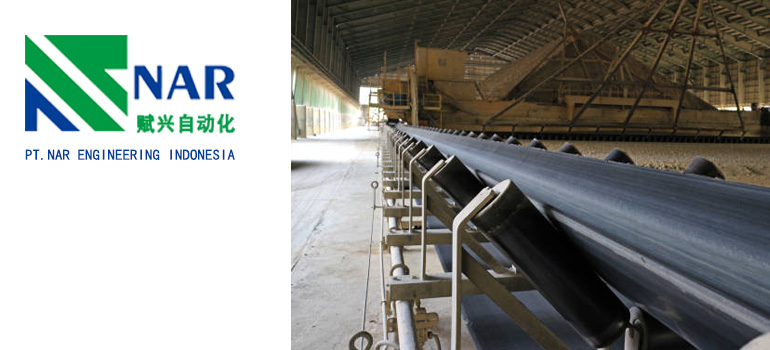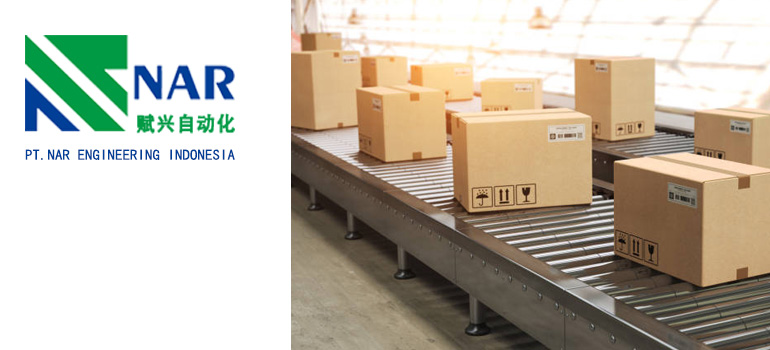Summary:
Choosing the Right Conveyor Belt Material: A Comprehensive Guide
Introduction to Conveyor Belt Materials: Understanding the Foundation of Efficient Operations
Properties and Characteristics of Conveyor Belt Materials
Considerations for Material Selection
Introduction to Conveyor Belt Materials: Understanding the Foundation of Efficient Operations
When it comes to the smooth functioning of any conveyor system, the choice of conveyor belt material stands as a cornerstone. Imagine a ballet dancer gliding gracefully across the stage – each movement precise and fluid. Similarly, the selection of the right conveyor belt material ensures the seamless flow of goods and materials within industrial settings, contributing to the overall efficiency and productivity of operations.
Importance of Material Selection: Ensuring Peak Performance
Every aspect of a conveyor system plays a crucial role in its performance, and the choice of material is no exception. Just as a marathon runner selects the most suitable shoes for the terrain ahead, industries must carefully consider the properties and characteristics of conveyor belt materials to optimize performance and longevity.
Impact on Conveyor Performance
The conveyor belt material directly impacts the system’s ability to transport goods efficiently and reliably. Factors such as grip, flexibility, and resistance to wear and tear significantly influence the conveyor’s overall performance.
Influence on Operational Efficiency
Efficient material handling is the backbone of streamlined operations. By selecting the right conveyor belt material, industries can minimize downtime, reduce maintenance costs, and enhance throughput, ultimately boosting the efficiency of their entire production process.
Factors Influencing Material Choice: Navigating the Terrain of Industry Needs
Choosing the appropriate conveyor belt material involves a careful balancing act, considering various factors to meet the unique demands of each application. Just as a seasoned captain charts the course through treacherous waters, industries must navigate through environmental conditions, application requirements, and budget constraints to make informed decisions.
Environmental Conditions
From scorching heat to freezing cold, conveyor systems often operate in challenging environments. The selected material must withstand extremes in temperature, humidity, and exposure to chemicals or abrasive substances without compromising performance or integrity.
Application Requirements
Different industries and applications have distinct material handling needs. Whether conveying heavy-duty materials in mining operations or delicate products in food processing plants, the conveyor belt material must align with specific application requirements to ensure safe and efficient handling.
Budget Constraints
In a world where every penny counts, cost-effectiveness plays a pivotal role in material selection. Balancing performance requirements with budget constraints requires careful consideration to maximize value without sacrificing quality or reliability.
Overview of Common Conveyor Belt Materials: Navigating the Landscape of Options

The world of conveyor belt materials is vast and diverse, offering a range of options to suit various applications and industries. Like a traveler surveying a map before embarking on a journey, understanding the characteristics and applications of common conveyor belt materials provides a roadmap for selecting the most suitable option.
Rubber-Based Materials
Renowned for their versatility and resilience, rubber-based conveyor belt materials offer excellent grip, abrasion resistance, and flexibility, making them ideal for a wide range of applications across industries such as mining, agriculture, and manufacturing.
PVC and Vinyl Compounds
PVC and vinyl conveyor belt materials boast exceptional chemical resistance and durability, making them well-suited for applications involving exposure to oils, chemicals, or harsh cleaning agents, such as those found in the pharmaceutical and automotive industries.
Fabric and Metal Options
Fabric and metal conveyor belt materials cater to specialized applications that demand strength, stability, and precision. From high-tension conveying in heavy industries to food-grade handling in the food and beverage sector, these materials offer tailored solutions to meet unique operational requirements.
Properties and Characteristics of Conveyor Belt Materials
Selecting the right conveyor belt material involves delving into its intrinsic properties and understanding how they contribute to the smooth functioning of industrial operations. Just as a craftsman selects the finest tools for their trade, industries must grasp the unique properties and characteristics of conveyor belt materials to ensure optimal performance and longevity.
Strength and Durability: Building Blocks of Reliability
At the heart of every conveyor system lies the need for strength and durability. Like the foundation of a sturdy fortress, the conveyor belt material must possess the resilience to withstand the rigors of continuous operation while maintaining structural integrity over time.
Tensile Strength
The ability of a conveyor belt material to withstand tension without rupturing is paramount. High tensile strength ensures that the belt can withstand the forces exerted during conveying, preventing elongation and ensuring reliable performance under heavy loads.
Impact Resistance
In industrial environments where materials are often transferred with force, impact resistance is crucial. Conveyor belt materials with superior impact resistance mitigate the risk of damage from sharp or heavy objects, minimizing downtime and maintenance costs.
Abrasion Resistance: Shielding Against Wear and Tear
As materials traverse conveyor systems, friction and abrasion can take their toll on belt surfaces. Similar to armor protecting a knight in battle, abrasion-resistant conveyor belt materials shield against wear and tear, prolonging the lifespan of the belt and minimizing the need for frequent replacements.
Surface Coatings and Compounds
Incorporating specialized coatings and compounds enhances the abrasion resistance of conveyor belt materials, forming a protective barrier against abrasive materials and harsh operating conditions.
Longevity and Cost Efficiency
By reducing the effects of abrasion, conveyor belt materials exhibit greater longevity, translating into cost savings for industries through reduced downtime, maintenance, and replacement expenses.
Chemical Compatibility: Safeguarding Against Corrosive Elements
In environments where exposure to chemicals is prevalent, conveyor belt materials must withstand the corrosive effects of acids, alkalis, and other hazardous substances. Just as a chemist selects the appropriate materials for laboratory experiments, industries must choose conveyor belt materials with chemical compatibility to ensure safety and reliability.
Resistance to Chemicals
Conveyor belt materials resistant to chemical degradation offer unparalleled protection against corrosion, ensuring the integrity of the belt and preventing contamination of conveyed materials.
Application-Specific Formulations
Tailoring conveyor belt materials to specific chemical environments involves selecting formulations optimized for resistance to particular substances, safeguarding against degradation and maintaining operational efficiency.
Flexibility and Adaptability: Adapting to Diverse Applications
In the dynamic landscape of industrial operations, conveyor systems encounter a myriad of challenges and requirements. Flexibility and adaptability in conveyor belt materials enable seamless integration into diverse applications, ensuring versatility and efficiency across industries.
Flexural Properties
Conveyor belt materials with superior flexibility can navigate tight curves and contours with ease, optimizing space utilization and enabling efficient material handling in constrained environments.
Adaptation to Varied Environments
From extreme temperatures to fluctuating humidity levels, conveyor belt materials must adapt to diverse environmental conditions without compromising performance, ensuring reliability and consistency in operations.
Considerations for Material Selection
Choosing the right conveyor belt material involves a meticulous evaluation of various factors to ensure alignment with operational needs and industry standards. Just as a seasoned navigator charts the course through uncharted waters, industries must navigate through a sea of considerations to make informed decisions that drive efficiency and reliability in material handling processes.
Application Specifics: Tailoring Solutions to Unique Requirements
Each industrial application presents its own set of challenges and requirements, necessitating a customized approach to material selection. Understanding the specific demands of the application is crucial in identifying the most suitable conveyor belt material that meets performance expectations and regulatory standards.
Material Characteristics
Analyzing the properties of the materials being conveyed is essential in determining the ideal conveyor belt material. Factors such as size, shape, weight, and temperature sensitivity influence the choice of material to ensure efficient and safe transportation.
Operational Environment
Environmental conditions, including temperature extremes, humidity levels, and exposure to chemicals or abrasive substances, play a significant role in material selection. Matching the conveyor belt material to the operational environment ensures durability, reliability, and longevity in service.
Regulatory Compliance
Compliance with industry regulations and standards is non-negotiable in material selection. Ensuring that the chosen conveyor belt material meets safety, hygiene, and environmental requirements minimizes risks and liabilities while upholding operational integrity.
Cost Considerations: Balancing Performance and Affordability
In a competitive business landscape, cost-effectiveness is a critical factor in material selection. Balancing upfront costs with long-term performance and maintenance requirements is essential to maximize value without compromising quality or operational efficiency.
Initial Investment
Assessing the initial investment required for acquiring and installing conveyor belt materials is the first step in cost analysis. While high-performance materials may entail higher upfront costs, their potential benefits in terms of longevity and operational efficiency must be weighed against the initial outlay.
Total Cost of Ownership (TCO)
Taking a holistic view of costs beyond the initial investment provides a clearer picture of the overall economic impact. Evaluating factors such as maintenance expenses, downtime costs, and replacement frequency allows industries to calculate the total cost of ownership and make informed decisions based on long-term value.
Return on Investment (ROI)
Measuring the return on investment derived from selecting a particular conveyor belt material is essential in assessing its financial viability. Factors such as productivity gains, energy efficiency improvements, and reduced maintenance requirements contribute to the ROI calculation, guiding decisions towards optimal outcomes.
Supplier Collaboration: Leveraging Expertise for Strategic Partnerships
Collaborating with trusted suppliers and industry experts is invaluable in navigating the complexities of material selection. Establishing strategic partnerships fosters knowledge exchange, innovation, and customized solutions tailored to specific operational needs.
Supplier Expertise and Support
Partnering with suppliers who demonstrate expertise in conveyor belt materials provides access to valuable insights and guidance throughout the selection process. Leveraging their technical knowledge and experience enhances decision-making and ensures compatibility with existing systems and processes.
Product Customization and Innovation
Working closely with suppliers enables customization of conveyor belt materials to address unique requirements and challenges. From tailored formulations to innovative design solutions, collaboration fosters continuous improvement and optimization of material performance in real-world applications.
Long-Term Relationship Building
Building long-term relationships with reliable suppliers fosters trust, reliability, and mutual success. Establishing open communication channels and fostering a spirit of collaboration facilitates ongoing support, troubleshooting, and adaptation to evolving operational needs over time.

